In this Rome travel guide we will cover everything you need to know for your trip to Rome. We’ll also include insider tips 😉
No blog post can truly capture 3,000 years of history, rich with art, architecture, and culture. Once the heart of the ancient republic and empire, Rome—‘the Eternal City’—conquered the Western world, leaving its mark that still resonates today. Home to the Catholic Church, Rome is ideal for a city break to explore some of Italy’s top attractions. If you love food, art, and history, this is the perfect destination!
We’ve visited Rome multiple times and even called it home for a few years. So let’s move on and start your next trip to Rome.
Francesca created a 5-Day
digital itinerary of Rome
GET YOUR COPY NOW
Use Promo Code: NEXTTRIP
for 50% discount
Click the image to download the template
Affiliate disclosure: This article contains affiliate links. If you choose to make a purchase through them, we may earn a small commission at no additional cost to you. These commissions help us continue creating helpful travel guides, tips, and inspiration. Thank you for your support!
How to get to Rome
Find Flights to Rome
From Fiumicino Airport to city centre
Shuttle buses and Trains to/from Fiumicino Airport:
- SIT Bus shuttle: This non-stop service between Fiumicino Airport and Roma Termini is reliable and comfortable. We’ve used it multiple times and always had a great experience. Heading to the airport? Find their buses at Via Marsala 5. From Termini, exit towards Via Marsala and turn left.
- Terravision: Similar to SIT Bus, Terravision is highly popular. With full buses being common, it’s wise to book in advance.
- Train Option: Trains are a fast, efficient alternative. The Leonardo Express departs every 30 minutes, reaching Termini in just 32 minutes. There are 47 daily train journeys from Fiumicino to Termini.
Pro Tip: Don’t forget to validate your train ticket, if it’s not purchased online!
From Ciampino Airport to city centre
Ciampino Airport is small and easy to navigate. As you exit, you’ll spot a car park directly ahead and a small square with bus stops. The same companies serving Fiumicino—SIT Shuttle and Terravision—operate here as well.
Search all trasport options below
Taxis
Taxis offer the fastest, though most expensive, way to get around Rome. Depending on your destination, they might be your only option. However, beware of taxi scams, which are unfortunately common in the city. For a reliable alternative, consider booking a transfer through our partner HERE.
Finally, you could rent a car from the banner below if you wish to visit other parts of Italy.
Rome Travel Guide: The Best Areas to Stay in Rome
Rome is divided up into 15 Municipi (districts) and each one of them is made of several neighbourhoods. These can then be divided up into Rioni – a sort of ‘neighbourhoods within the neighbourhoods’ – which were created by the ancient Romans. Today, many Rioni still correspond to their original ancient Roman division. How crazy is that?
Let’s have a look at some of the best Roman neighbourhoods.
1. Parioli
The overall area which includes Parioli and its surroundings is one of the greenest in the city. Not too far from the heart of Parioli, you can find Rimembranza Park, Acquacetosa Park, and Villa Ada. Parioli is like a ‘city within the city’ with all the amenities available for you: shops, supermarkets, bars, restaurants, and much more. It is also well served by public transport, and it is located not far from the city center. A great choice if you are looking for tranquillity, away from the crazy Roman traffic. Price ranges vary from luxurious options to more affordable ones.
Discover the best places to stay in Parioli
2. San Lorenzo
While Parioli is a a quiet neighbourhood, San Lorenzo is the opposite. This is a very lively and young neighborhood, located between Termini and Sapienza University. Here you will find plenty of cool bars, handicraft shops, events, and concerts. And also, be ready for this………. here are some of the best restaurants in the city! The area isn’t popular among tourists, but if you are looking for some authentic traditional food, this is the right place.
Discover the best places to stay in San Lorenzo
3. Trastevere
Walking along the Tevere river, sipping a cocktail at the square, and attending one of the many cultural events around, has become a routine for locals and tourists in this picturesque neighbourhood. A mix of trendy bars and fancy buildings makes the place affordable for all budgets. Do stay in Trastevere if you want to live like a local and experience a bit of Roman nightlife. Definitely visit the area even if you are not staying here: you won’t regret it.
Discover the best places to stay in Trastevere
4. Monti
“Rione I” Monti has been the heart of the city since the Roman Empire, and it is still today one of the most populated. You will be close to the Roman Forum, the Colosseum, and basilica Santa Maria Maggiore. Due to the very central location, accommodation tends to be expensive, though it is possible to find hostels and apartments at reasonable prices, especially during low seasons. An ideal place if you want to stay central and don’t mind crowds.
Discover the best places to stay in Rione I Monti (City Centre)
5. Testaccio
Testaccio lies in the Ostiense district, in the southern outskirt of the city. As Testaccio is a bit distant from the city center, it would be ideal to stay here if you prefer to avoid crowds of tourists and find good hotel deals. This neighbourhood is renowned for its authentic food experiences. At Testaccio market – the main public market of Rome – you can find high-quality traditional foods for the right price. Do choose this neighbourhood if you want to live an authentic experience.
Discover the best places to stay in the Ostiense District
6. Prati
If you choose to stay in Prati, it will be probably because of its proximity to the Vatican. Prati is very stylish, with its marvelous architecture and long tree-lined avenues. Places of interest around here include San Pietro Basilica, the Sistine Chapel, the Vatican Museums, and Sant’Angelo Castle (located in Rione Borgo). It’s the perfect choice if you are interested in architecture and want to be among the first ones to visit these world-famous landmarks in the morning.
Discover the best places to stay in Prati (Vatican)
Rome Travel Guide
Best areas to stay in Rome: things to consider
There are numerous neighborhoods to choose from in Rome. For this Rome travel guide, we selected areas based on factors such as location, cultural influence, and cost of living. While some neighborhoods are more expensive than others, we’ve balanced the convenience and the unique advantages of staying in certain areas with their higher costs.
How to Visit Rome on a Budget
In this Rome travel guide we’ll cover the best things to do on a budget.
1. Free museums
One of the best things to do in Rome is explore its many attractions, including its museums. On special occasions, museums offer free entry. When? Some museums are free on the first Sunday of the month, while others offer free admission on the last Sunday. Additionally, free entry is sometimes available on special celebrations or national holidays. On www.romeguide.it you can find the most updated list of museums and when they are open for free. But that is not all. Museums in Rome are free to visit for selected categories of people and discounted for some others. Visit www.museiincomuneroma.it to see if you are one of them!
2. Choose the low season
Visiting Rome in the low season is a great way to save money. Flights, accommodation, and even bars and restaurants typically lower their prices. The low season runs from October to March, excluding December 8 to January 8. If you’re planning a winter getaway, check for major events like big sporting events, which can drive up prices.
3. Experience the magic Trevi Fountain
No Rome travel guide is complete without the Trevi Fountain. A visit to Rome isn’t finished without stopping by this iconic landmark. Admiring the fountain and snapping photos is free, but expect large crowds. Most importantly, don’t swim in the fountain—you’ll be fined! According to legend, tossing a coin into the fountain over your left shoulder ensures a return to Rome one day.
4. Take long walks
Rome is a walkable city, and skipping public transport can save you both money and stress. Traffic is chaotic, and the metro and buses are often crowded. Walking is the best way to explore Rome’s top landmarks without spending a cent. With thousands of sights to see, don’t rush—make a list of must-see spots and stick to it.
A great half-day route includes: Piazza Navona (one of Rome’s most beautiful squares), the Pantheon, the Trevi Fountain, and Piazza di Spagna. Once at Piazza di Spagna, relax and soak in the surroundings, then climb the Spanish Steps for a stunning view of the city.
5. Experience the local lifestyle
Life in Rome is bustling, especially during peak hours. However, locals often take breaks to relax at bars. Unlike bars elsewhere, Italian bars are more like coffee shops. Instead of sitting down for hours with a coffee, Italians stand at the bar for 10-15 minutes, chat briefly, and then leave. Try this for a quick, authentic experience—and to avoid paying table fees!
NOTE ON TABLE PRICES
Most bars and cafes in Rome have two price categories: bar prices and table prices. Table prices are higher, as they include the service charge for being served at your table. By law, these prices must be displayed, so be sure to check them before ordering
6. Save on Roaming Charges
If you’re traveling to Italy from outside Europe, avoid expensive roaming fees by using an eSIM. As long as your phone supports it, you can buy a local data plan online before your trip—no physical SIM card required. Stay connected the easy way – Get your eSIM here.
7. Use your money wisely
These tips will help you save a good bit of money while in Rome 😉
WATER and STREET VENDORS
Skip buying bottled water in Rome. The city’s small fountains provide free, safe drinking water—just bring a bottle to refill as needed. Use the WAIDY app to locate the nearest fountain. Avoid purchasing water, drinks, or even produce from street vendors and food carts, as their prices are often steep.
SHOPPING
While doing some shopping in Rome, you would be entitled to 11-13% tax back if you are a Non-EU visitor and spend € 155 or more. All you need to do is to fill out a form at the shop.
WALKING TOURS
Free walking tours would allow you to discover many parts of the city and meet new people. At the end of the tour, just leave a small tip of your choice.
8. Get discounted cards
As in many cities, discount cards can save you time and money—if you plan your visits carefully.
The Roma Pass 48 Hours offers free entry to one included museum, discounts on others, and unlimited travel on buses, metro, trams, and suburban lines.
The Roma Pass 72 Hours includes free entry to two museums, the same discounts, and unlimited public transport.
Both passes let you skip the lines at the Colosseum and Castel Sant’Angelo and come with a handy foldable city map. However, you’ll still need to book your visit to the Colosseum, Roman Forum, and Palatine Hill in advance.
The Omnia Card extends the benefits of the Roma Pass 72 by adding access to the Vatican Museums, Sistine Chapel, public transport, and a hop-on-hop-off bus, alongside your two free museum entries. Essentially, the Omnia Card complements the Roma Pass 72. The combined cost for both starts at €129.
9. Save money at restaurants
Service
- Restaurants in Italy often add a small service charge, typically around €3, which includes a basket of bread. However, in tourist-heavy areas, this fee is usually higher. To save money, try to avoid dining in these spots.
Wine
- Wine is generally affordable in Italy, where it’s a cultural staple. Bad wine is rare, so if you’re not a connoisseur, consider ordering house wine instead of a bottle. Served in carafes, house wines are typically high-quality, local, and much cheaper than bottled options.
Fish
- Rome boasts excellent fish restaurants, but they are often expensive. Menus typically list prices per 100 grams, not per dish, as you pay for the entire fish. For example, at €6 per 100 grams, a 1-kilogram fish will cost €60—just for one fish. If you only want a fillet, check if it’s listed on the menu. If not, be aware that servers will likely try to sell you the whole fish.
Specials
- Servers may suggest a “special of the day,” which is fine, but always ask for the price first. As a rule, check prices before ordering. If prices aren’t listed, ask—this applies to specials, desserts, and drinks.
Are you enjoying this blog post? Follow us to see the latest updates
The 10 Best Things to Visit in Rome
Any Rome travel guide would incomplete without covering the best things to do. In the next section, we will cover the 10 best things to visit in Rome.
1. The Colosseum
The Colosseum, constructed between 70 and 80 AD, was inaugurated by Emperor Titus in 80 AD with 100 days of games, during which over 2,000 gladiators died. As the largest amphitheater of the Roman Empire, it hosted exotic animal exhibitions, prisoner executions, and gladiator fights for over 500 years. Despite centuries of earthquakes, fires, and bombings, this architectural masterpiece remains well-preserved.
A visit to the Colosseum is a must when in Rome, as it is one of the 7 Wonders of the Modern World.
To skip long queues, consider joining a guided Colosseum tour that also includes access to the Roman Forum and Palatine Hill.
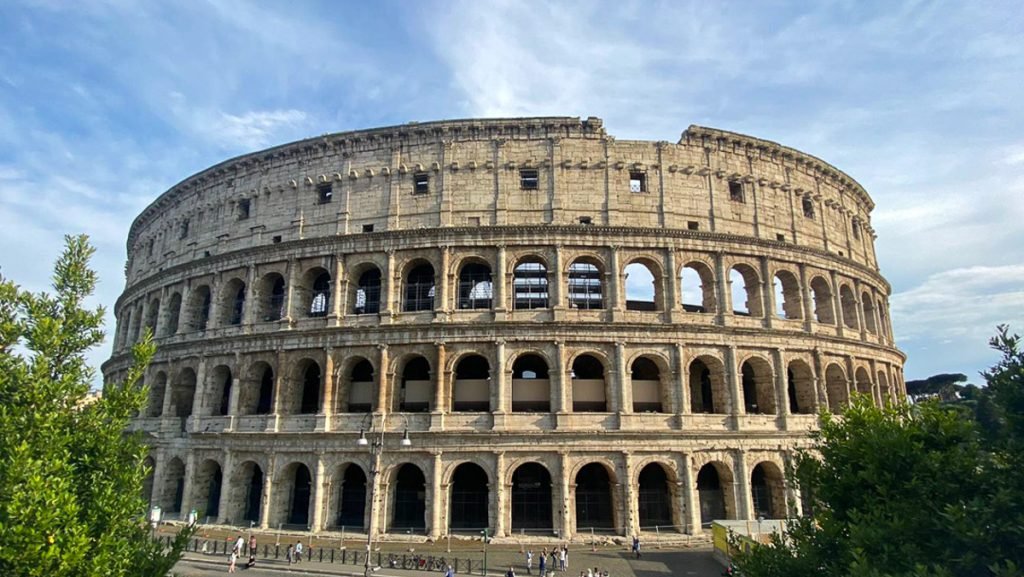
IMPORTANT!
Queues for Colosseum tickets are often long, and in some cases, visitors may spend the entire day waiting without being able to get in.
To avoid disappointment, book the Colosseum Undergrounds priority entry tickets or the Colosseum guided tour with priority access in advance!
2. The Roman Forum and the Palatine Hill
The Roman Forum, located in the heart of Rome near the Colosseum and Palatine Hill, was the political, judicial, religious, and economic center of ancient Rome. Today, its impressive ruins offer a glimpse into that era, making it feel like stepping back in time. As with much of Rome, the Forum is like an open-air museum.
Nearby is Palatine Hill, one of Rome’s seven hills and among its oldest sites. According to legend, this is where the she-wolf Lupa discovered Romulus and Remus. From its heights, you’ll enjoy stunning views of the city, including the Forum and Circus Maximus.
These sites, located in the heart of the historical center of Rome, are an absolute must-see. To visit both sites, you should take the Colosseum, Roman Forum & Palatine Hill Tour.
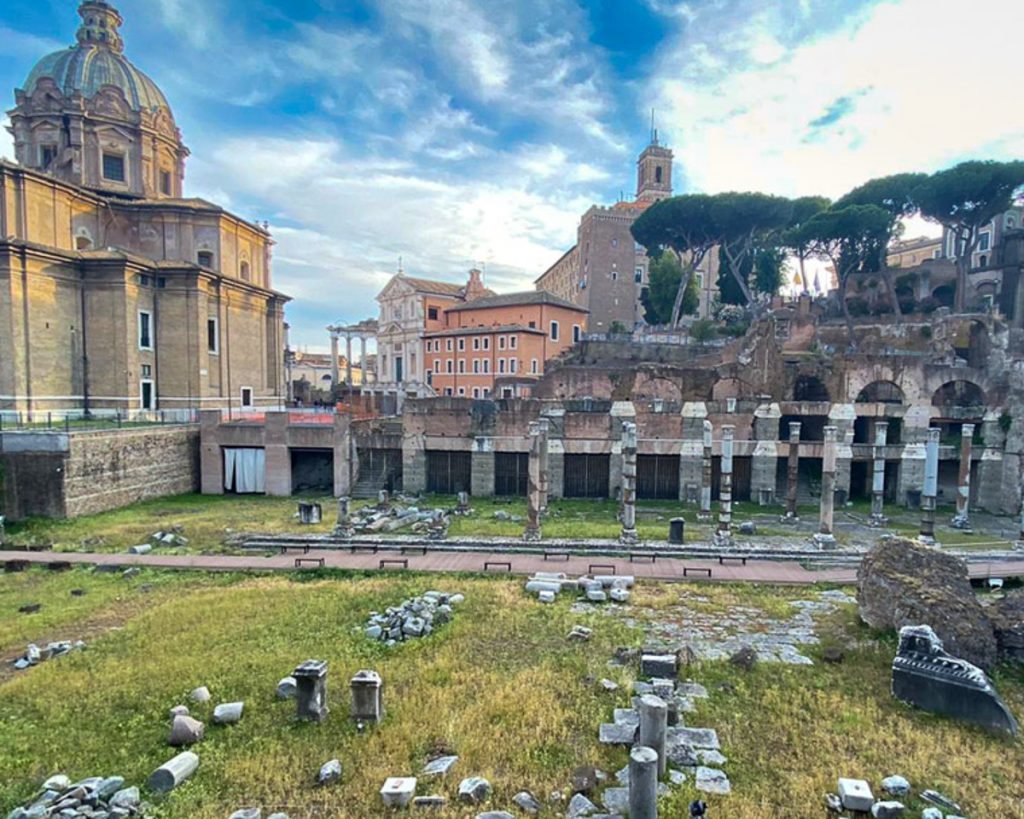
GOOD TO KNOW
The Roman Forum, Palatine Hill, and the Colosseum are part of the same archaeological area and share a single admission ticket. While tickets are available on-site, we highly recommend booking online to secure your preferred time slot and skip the long queues.
3. The Pantheon
The Pantheon was originally a temple dedicated to all gods—past, present, and future. Rebuilt in 124 AD under Emperor Hadrian, the structure remains remarkably intact and majestic. Inside, the perfectly spherical design symbolizes the vault of heaven, reflecting the idea that all gods are equally important.
The mighty dome of the Pantheon is the biggest brick dome ever built. At the center of the dome, there is a 9-meter diameter oculus, also known as ‘the eye of the Pantheon’. This was a clever idea made to illuminate the temple (there are no windows to illuminate it) and also to let people contemplate the heavens. One of the best sights in Rome which can be visited with this Pantheon Skip the Line Tour.
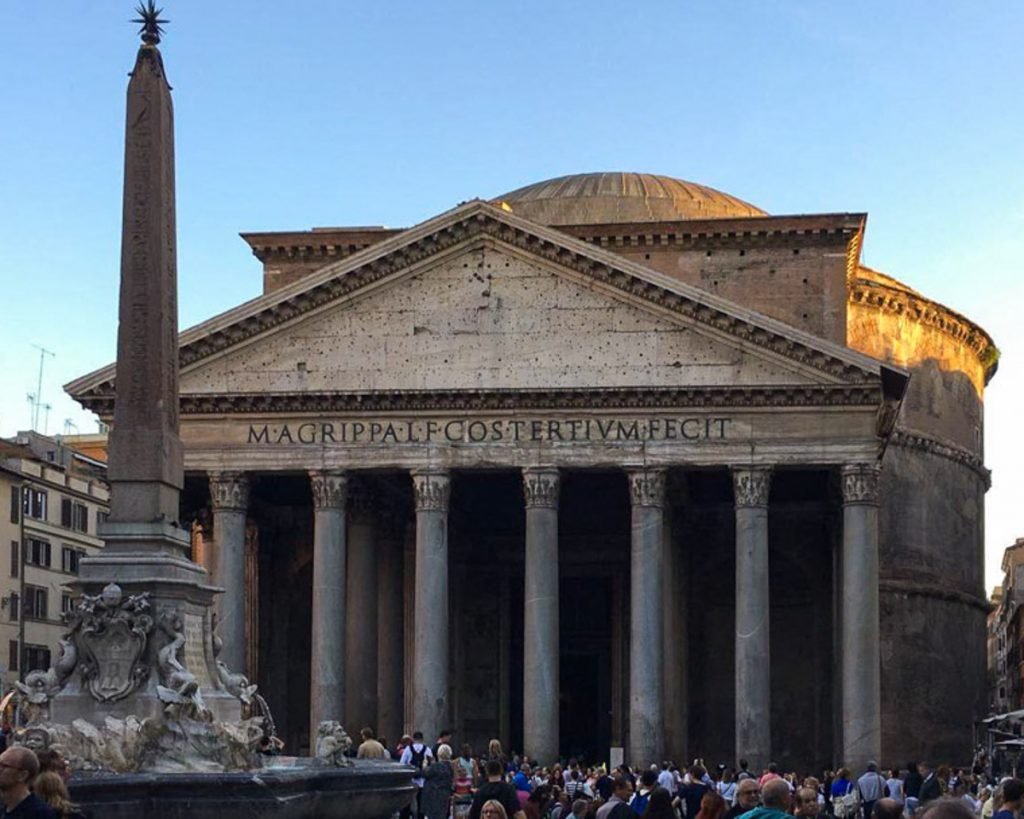
4. L’Altare della Patria
Next, we move from ancient Rome to more recent history, spanning from 1911 to 1935. L’Altare della Patria (Altar of the Fatherland), also known as the Monument to Victor Emmanuel II, is located in Piazza Venezia. This monument honors the first king of united Italy and the leader of its liberation from foreign rule. It features grand stairways, fountains, an equestrian statue of Victor Emmanuel II, and two statues of the Goddess Victoria. At its base is the crypt of the Unknown Soldier, commemorating all Italian soldiers who died in wars, particularly during World War I.
The monument is a focal point for national celebrations, including Liberation Day (April 25), Republic Day (June 2), and Armed Forces Day (November 4). Visitors can access the panoramic terrace for stunning views of the city. Additionally, a museum at the base of the monument is dedicated to Italy’s unification.
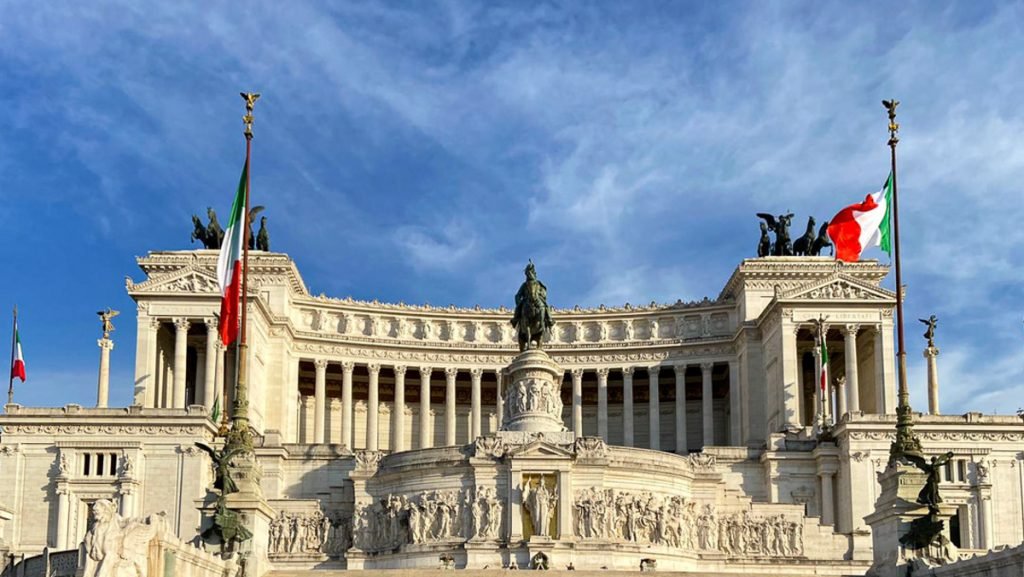
5. The Trevi Fountain
Close to the Pantheon stands the world-famous Trevi Fountain. The origin of the fountain dates back to 19 B.C. when Marcus Vipsanius developed the Aqua Virgo aqueduct to provide citizens with access to quality water. Since then, the fountain has undergone several developments and restorations becoming a monumental landmark of which Romans are very proud.
The myth that originated in a movie, says that if you throw a coin into the fountain with your back facing the fountain, and with your right hand over your left shoulder, you will return to Rome one day. Enjoy staring at the fountain and take all the pictures you want for free. However, if you want to avoid the large crowds of tourists that gather here daily, you should plan a visit in the early morning. The Trevi fountain can also be visited as part of this informative Rome Squares and Fountains Guided Tour which covers some of the most important squares and fountains of Rome and goes through their history.

6. St. Peter’s Basilica
Located in the UNESCO World Heritage site of Vatican City, St. Peter’s Basilica is named after one of Jesus’s twelve disciples. It serves as the Pope’s church and a major pilgrimage destination. Built during the Renaissance, it was designed by renowned architects and sculptors like Bramante, Raphael, Michelangelo, and Bernini.
Just a short walk away from the Basilica and you’ll find the Vatican Museums. The museums host a vast art collection and include unique, historically significant rooms of the Apostolic Palaces. Admire the frescoes of the Sistine Chapel and the masterpieces of St. Peter’s Basilica. The Vatican Museums and the Sistine Chapel are among the busiest sights in the world. Book your Vatican Museums & Sistine Chapel Skip The Line Tickets in Advance to avoid disappointment. If you prefer guided tours then why not join a fully immersive Vatican Museums and Sistine Chapel Guided Tour.
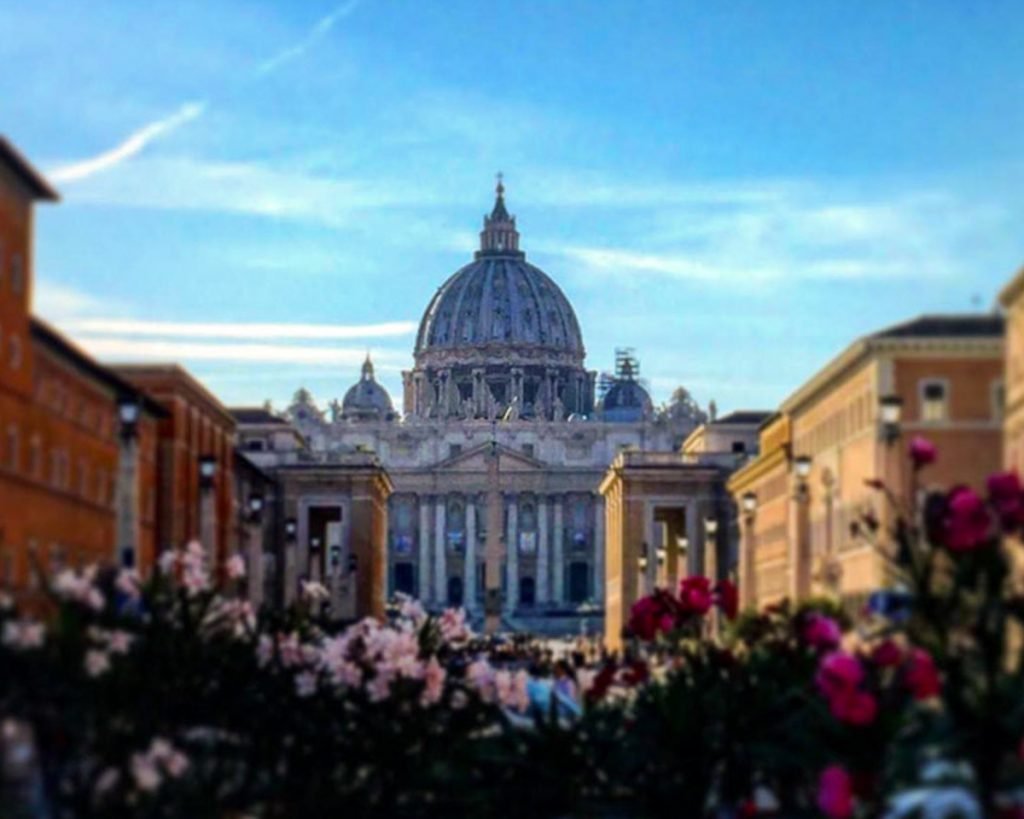
7. Castel Sant’Angelo
Castel Sant’Angelo, built between 123 and 139 CE as the mausoleum for Emperor Hadrian, has served many purposes over the centuries: a castle, a Vatican military fortress, a prison for executions, and now a museum. Located just a 10-minute walk from Piazza Navona and the Vatican, it is connected by the beautiful Sant’Angelo Bridge, lined with Bernini’s white marble angels. The museum is open daily from 9 am to 7:30 pm.
A visit ending up at sunset on the terrace, from which spectacular views of Saint Peter’s Basilica can be admired, is very popular among locals and tourists. The Castel Sant’ Angelo Tour offers the possibility to learn more about the castle’s decorations, rooms, and secret tunnels. Castel Sant’Angelo is one of Rome’s key symbols and has inspired many writers, such as Dan Brown, with his best-seller “Angels and Demons”. Highly recommended.
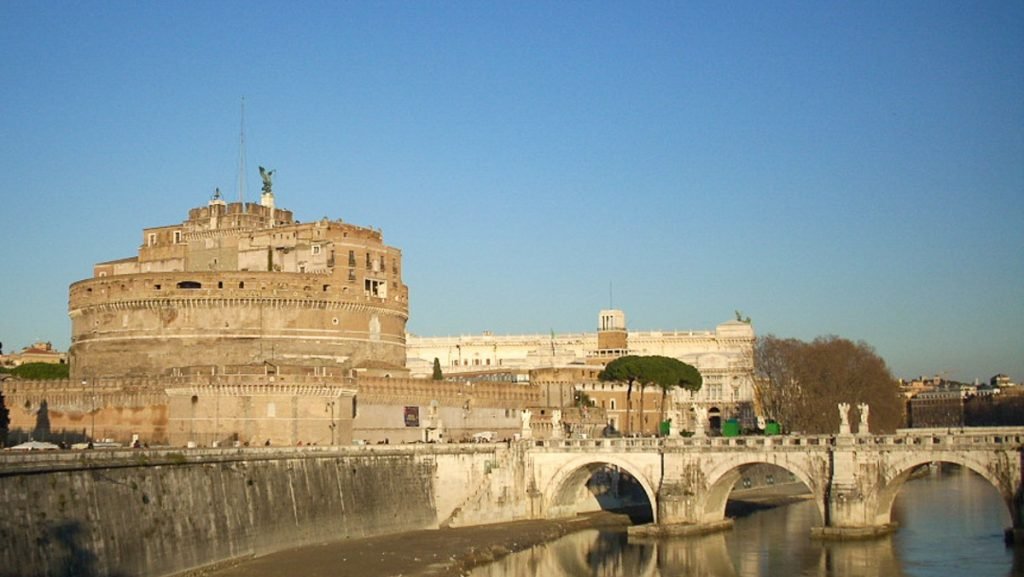
8. Galleria Borghese
The Borghese Gallery is an art gallery located in the beautiful Villa Borghese Park in Rome. It is renowned for its impressive collection of sculptures and paintings, particularly those from the Italian Renaissance and Baroque periods. Find Caravaggio, Raphael, Titian, and Bernini’s best artworks as well as Roman and Greek scupltures.
To ensure a more intimate viewing experience, access to the Borghese Gallery is limited, and visitors are required to book timed entry tickets in advance. Book your Borghese Gallery Ticket now.
9. Piazza di Spagna
Piazza di Spagna is a magnificent example of the Italian Baroque style. High-end shopping streets, such as Via Condotti and Via del Corso (just a few minutes away) surround the Piazza. Enjoy the Spanish steps (Scalinata di Trinità dei Monti) – 135 steps from the 18th Century which connect the square to the church Trinità dei Monti. The filming of several movies, such as ‘La Dolce Vita’, made this place an instantly recognizable landmark. At its center, Bernini’s fountain ‘La Barcaccia’ makes the view from the top of the stairways even more beautiful.
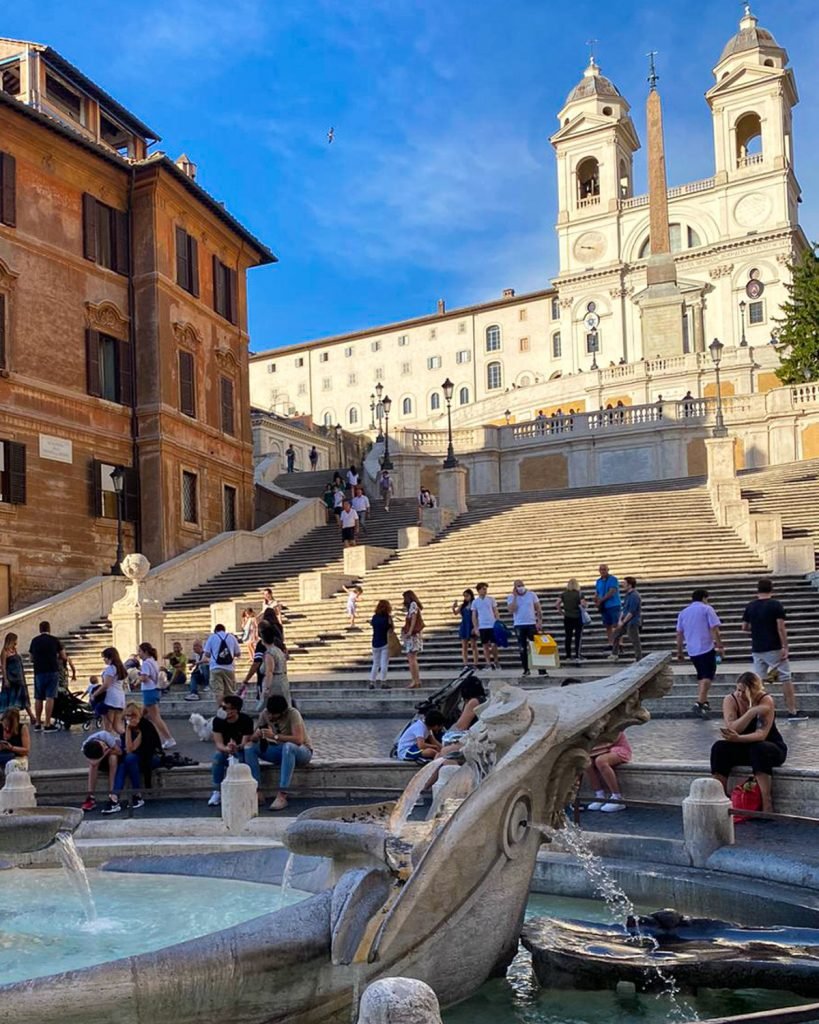
10. Piazza del Popolo
Due to its history, Piazza del Popolo has to have a place in our must-see list of Rome. The square is located at the northern gate of the city, which was once called Porta Flaminia. This gate was the main entrance to the city during the Roman Empire. Do not miss Santa Maria del Popolo, a basilica that features two canvases from Caravaggio. The square also features two twin churches: Santa Maria dei Miracoli and Santa Maria in Montesanto. From Piazza del Popolo starts what’s known as ‘the main street of Rome’, Via del Corso, home of the major luxury brand shops.
Do you have some extra time?
Have extra time in Rome and want to explore more of Italy? Consider a Pompeii Day Trip! This immersive full-day tour takes you to the iconic city buried under volcanic ash during Mount Vesuvius’s eruption in 79 AD, which tragically claimed 2,000 lives. Pompeii’s archaeological site, one of Italy’s top three attractions, is a must-see.
WANT MORE?
Check out these popular tours in Rome!
Time for Conclusions...
Travel smart. Get insured before you go.
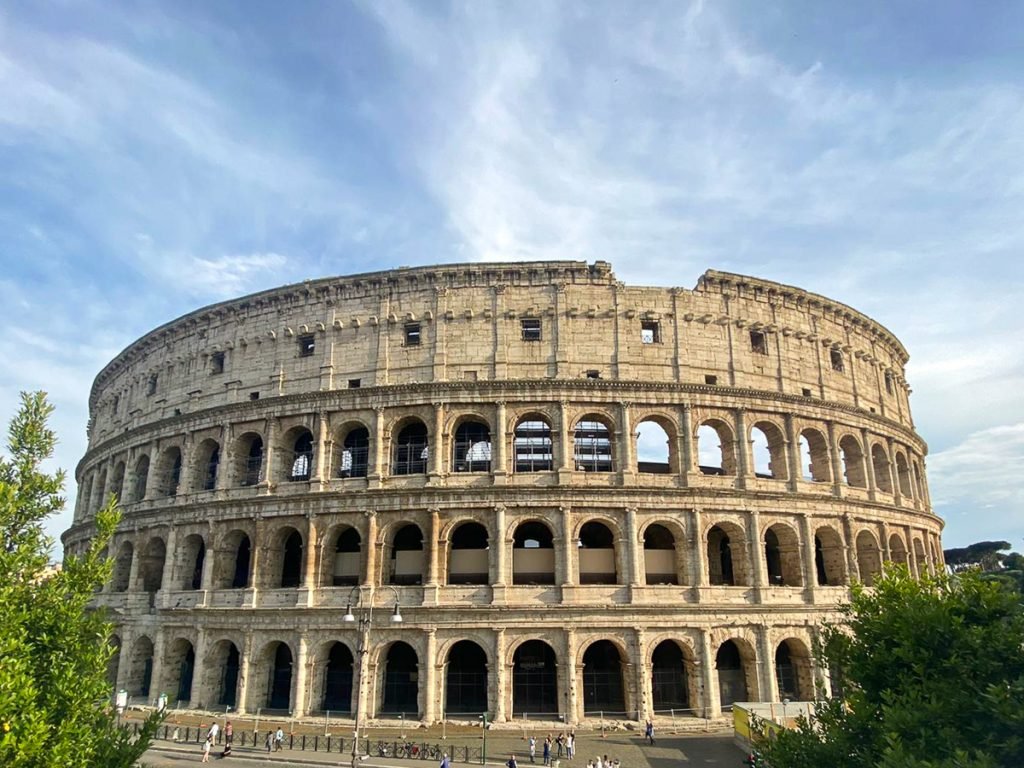

Pingback: The 10 Best Things To Do In Lisbon Portugal - Next Trip...Loading
Pingback: Paris City Break: All You Need to Know - Next Trip...Loading